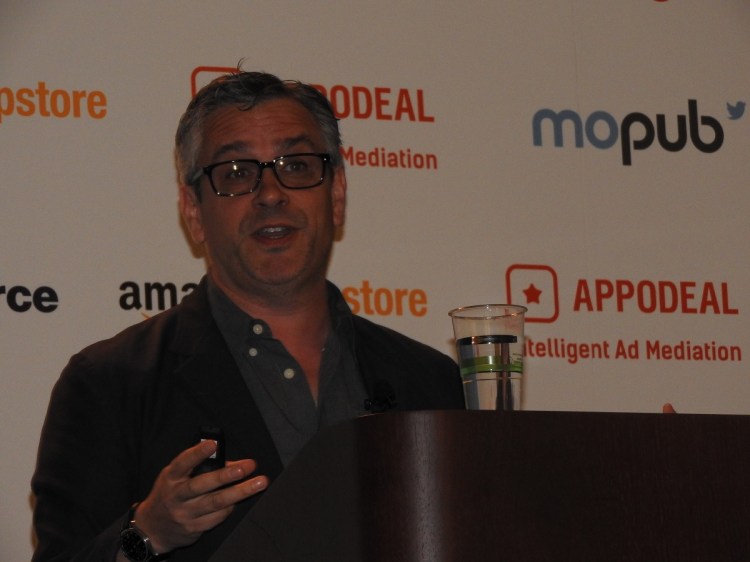Neil Young is one of the big thinkers in mobile games, and he came up with a big thought in a talk at today’s Casual Connect USA event: the $10 billion mobile game is inevitable.
He said this in spite of the fact that many investors have abandoned mobile games and moved into investing in augmented reality and virtual reality technology. While mobile games are a $36 billion market today (according to market researcher Newzoo), AR and VR are expected to be a $120 billion market by 2020, according to Digi-Capital.
Young compared and contrasted the opportunity in the existing market of mobile games to the potential market of AR and VR. He said that you can judge the potential of any new technology on a few different factors. One depends on the complexity of adopting the new tech. Another factor is how many “atoms” are needed to get the new tech into consumers’ hands. That figures in the cost of the hardware and how much consumers are likely to spend.
The last factor is dependent on whether there is breakthrough content. That determines whether or not the technology will take off, and it is the most unpredictable part of all of the equations. Using this prism, Young said that PC-based VR is very difficult to sell to consumers right now because it requires them to learn something completely new — how to navigate VR with goggles — that they don’t currently do.
VR is also hard when it comes to adoption because of the high cost of hardware and the absence of any obvious killer app.

Above: Neil Young, CEO of N3twork, expects to see a $10 billion mobile game.
By contrast, Young said that the swift rise of Pokémon Go was easier to explain because it embraces something people already do: walking around looking at their mobile phones. It also uses the same technology that they already have, smartphones and tablets. And it combines cool location technology, an accurate grid of locations developed through the prior Ingress game, and the hot Pokémon intellectual property.
While Pokémon Go does take advantage of a new kind of AR technology — layering digital imagery on the real world — it is an early form of that technology and doesn’t require everyone to buy AR glasses.
When it comes to VR, Young said, “I want to believe it, but when you think of what is required for VR, there are limitations. There a lots of atoms required. It requires a lot of behavioral change.”
Does this mean that you should not invest in VR or create VR games? Young said no. But you should be aware of the risks that accompany it.
So when it comes to VR, there are six strategies to pursue to win, he said. You could wait. You could work with a strategic investor who doesn’t mind losing money for a while. You could do something small that only requires a seed round or Series A round. You could focus on building infrastructure for the market. You could focus on a vertical market that will take off more easily. Or you could focus on breakthrough content.
In the meantime, Young said that mobile already reaches a billion users, and Pokémon Go suggests that there are still plenty of opportunities left to create really exciting games that light the imaginative fire for consumers.
As Bill Gates once observed, it’s easy to get too excited about a brand new technology and forget about the long-term impact of a technology that is more familiar.
The fact that mobile game hits such as Pokémon Go are getting bigger and bigger suggests to Young that we are still very early in reaping the financial benefits from having so many users.
“That’s why to me, the $10 billion game seems inevitable,” he said.
VentureBeat's mission is to be a digital town square for technical decision-makers to gain knowledge about transformative enterprise technology and transact. Learn More

